
Samuel Baldwin Marks Young was a United States Army general. He also served as the first president of Army War College between 1902 and 1903. He then served from 1903 until 1904 as the first Chief of Staff of the United States Army.
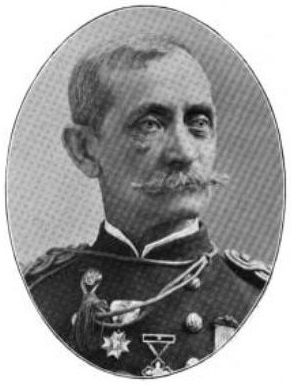
Guy Vernor Henry was an American military officer and Medal of Honor recipient who served as military governor of Puerto Rico.
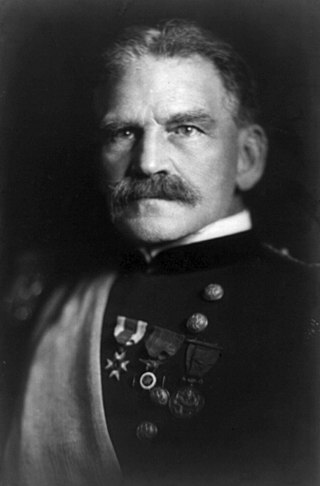
Adna Romanza Chaffee was a lieutenant general in the United States Army. Chaffee took part in the American Civil War and Indian Wars, played a key role in the Spanish–American War, and fought in the Boxer Rebellion in China. He was the Chief of Staff of the United States Army from 1904 to 1906, overseeing far-reaching transformation of organization and doctrine in the army.

Montgomery Cunningham Meigs was a career United States Army officer and military and civil engineer, who served as Quartermaster General of the U.S. Army during and after the American Civil War. Although a Southerner from Georgia, Meigs strongly opposed secession and supported the Union. His record as Quartermaster General was regarded as outstanding, both in effectiveness and in ethical probity, and Secretary of State William H. Seward viewed Meigs' leadership and contributions as key factors in the Union victory in the war.

Samuel Davis Sturgis was a senior officer of the United States Army. A veteran of the Mexican War, Civil War, and Indian Wars, he attained the rank of brevet major general.
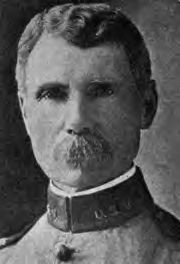
Theodore Schwan was a Union Army officer during the American Civil War who received the Medal of Honor for his actions at the Battle of Peebles' Farm. He also served with distinction during the Spanish–American and Philippine–American Wars.

Persifor Frazer Smith was a United States Army officer during the Seminole Wars and Mexican–American War. As commander of U.S. forces in California, he was one of the last military governors of the occupied territory before California became a state, and died during the Bleeding Kansas conflict. From 1848 to 1851 he was president of the Aztec Club of 1847, an organization of United States Army officers founded on October 13, 1847 in Mexico City during the Mexican–American War.

Fort Leavenworth National Cemetery is a United States National Cemetery located on Fort Leavenworth, a United States Army installation north of Leavenworth, Kansas. It was officially established in 1862, but was used as a burial ground as early as 1844, and was one of the twelve original United States National Cemeteries designated by Abraham Lincoln. The cemetery is the resting place of nine Medal of Honor recipients, but most are the less famous casualties of war. It was named for Brigadier General Henry Leavenworth, who was re-interred there in 1902 from Woodland Cemetery in Delhi, New York. Administered by the United States Department of Veterans Affairs, it occupies approximately 36.1 acres (14.6 ha) and was site to over 22,00 interments, as of 2020. It is maintained by Leavenworth National Cemetery.
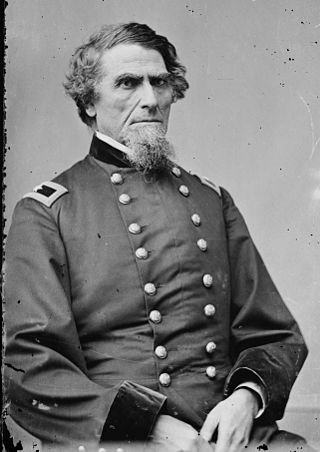
Benjamin Franklin Kelley was an American soldier who served as a brigadier general in the Union Army during the American Civil War. He played a prominent role in several military campaigns in West Virginia and Maryland.

Samuel M. Whitside was a United States Cavalry officer who served from 1858 to 1902. He commanded at every level from company to department for 32 of his 43 years in service, including Army posts such a Camp Huachuca, Jefferson Barracks, and Fort Sam Houston, the Departments of Eastern Cuba and Santiago and Puerto Principe, Cuba, commanded a provisional cavalry brigade, a squadron in the 7th Cavalry Regiment, and a troop and platoon in the 6th Cavalry Regiment. The pinnacle of his career was serving as the commanding general of the Department of Eastern Cuba before retiring in June 1902 as a brigadier general in the U.S. Army.

Benjamin Alvord Jr. was an American officer. He was the son of Benjamin Alvord, who was a scientist and an officer.

Robert Ransom Jr. was a major general in the Confederate States Army during the American Civil War. His brother Matt W. Ransom was also a Confederate general officer and U.S. Senator.
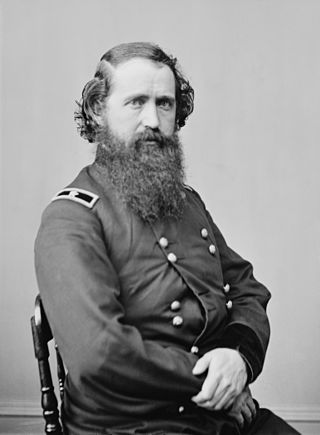
Robert Byington Mitchell was a brigadier general in the Union Army during the American Civil War and the Governor of the New Mexico Territory from 1866 to 1869.

Colonel Emerson Hamilton Liscum was a U.S. Army officer who fought in the American Civil War, Indian Wars, Spanish–American War, and the Philippine–American War. He was killed in battle at Tianjin, China during the Boxer Rebellion while commanding the 9th Infantry Regiment.
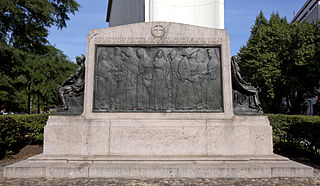
Nuns of the Battlefield is a public artwork made in 1924 by Irish artist Jerome Connor, located at the intersection of Rhode Island Avenue NW, M Street, and Connecticut Avenue NW, in Washington, D.C., United States. A tribute to the more than 600 nuns who nursed soldiers of both the Union Army and the Confederate States Army during the American Civil War, it is one of two monuments in the District that mark women's roles in the conflict. It is a contributing monument to the Civil War Monuments in Washington, D.C., listed on the National Register of Historic Places. In 1993, it was surveyed for the Smithsonian Institution's Save Outdoor Sculpture! program.

McKee Grave is a public artwork by an unknown artist, located at Arlington National Cemetery, Arlington, Virginia, United States. It serves as the final resting place of First Lieutenant Thomas Hudson McKee and his wife.

The Rough Riders Memorial is a memorial in Arlington National Cemetery in Arlington County, Virginia, in the United States that commemorates those members of the "Rough Riders" who died in the Spanish–American War in 1898. The grey granite shaft was erected by surviving members of the Rough Riders and their friends and supporters. Although Arlington National Cemetery, a number of secondary sources, and even the bronze plaque on the memorial say the monument was dedicated in 1906 and one source says 1905, contemporary newspaper accounts show the memorial was dedicated on April 12, 1907.

The grave of Emerson H. Liscum, also known as Emerson Hamilton Grave, is an outdoor public artwork located at Arlington National Cemetery in Arlington, Virginia, United States. This sculpture was surveyed in 1995 as part of the Smithsonian Institution's "Save Outdoor Sculpture!" program. The gravestone marks Liscum's final resting place.

James M. J. Sanno was a career officer in the United States Army. A veteran of the American Civil War, American Indian Wars, Spanish–American War, Philippine–American War, he attained the rank of brigadier general, and was best known for his command of the: 4th Infantry Regiment; 2nd Brigade, 1st Division, Eighth Army Corps; 18th Infantry Regiment; 27th Infantry Regiment; and Department of Colorado. On July 30, 1903, Sanno was promoted to brigadier general in recognition of his long career of superior service, and he retired on July 31. Sanno died at Fort Oglethorpe, Georgia, on May 4, 1907. He was buried at Arlington National Cemetery.

Charles G. Sawtelle was a career officer in the United States Army. A veteran of the American Indian Wars and American Civil War, he served from 1854 to 1897 and attained the rank of brigadier general while serving as Quartermaster General of the United States Army.






















